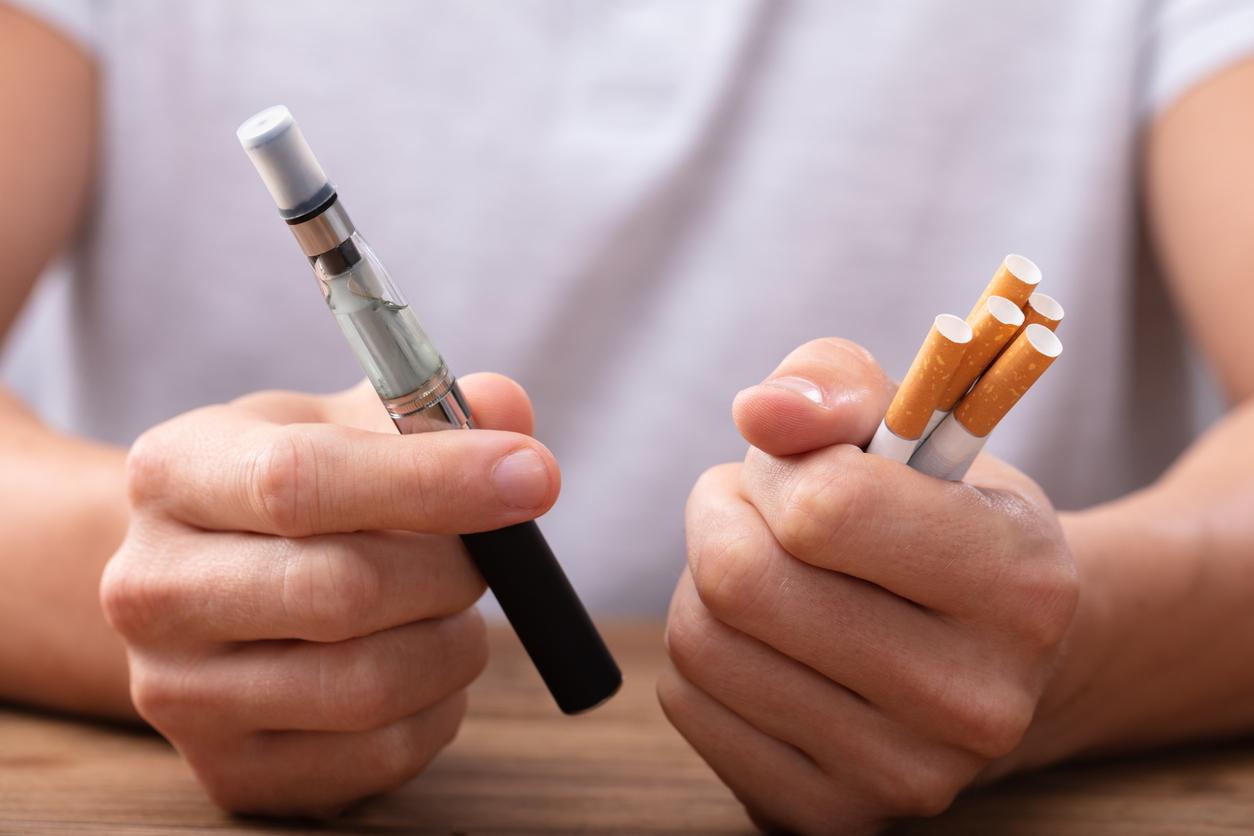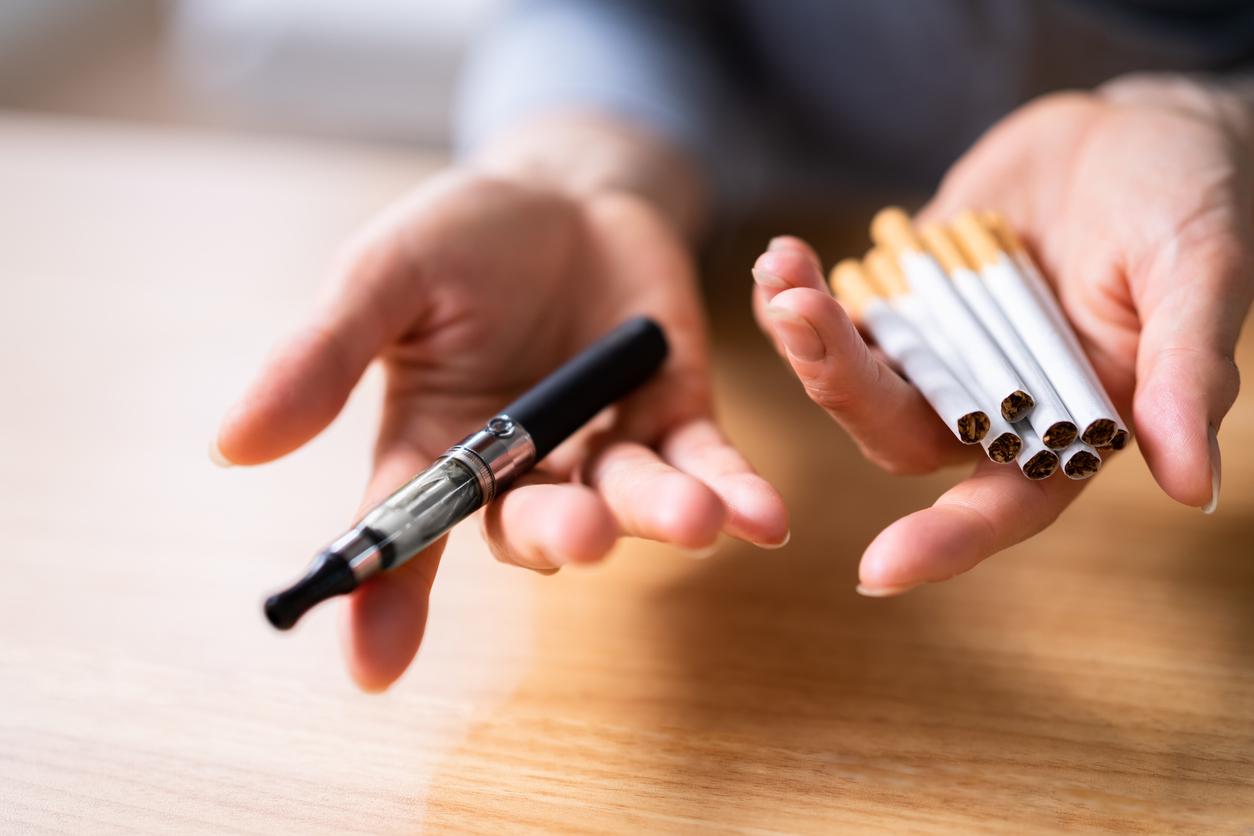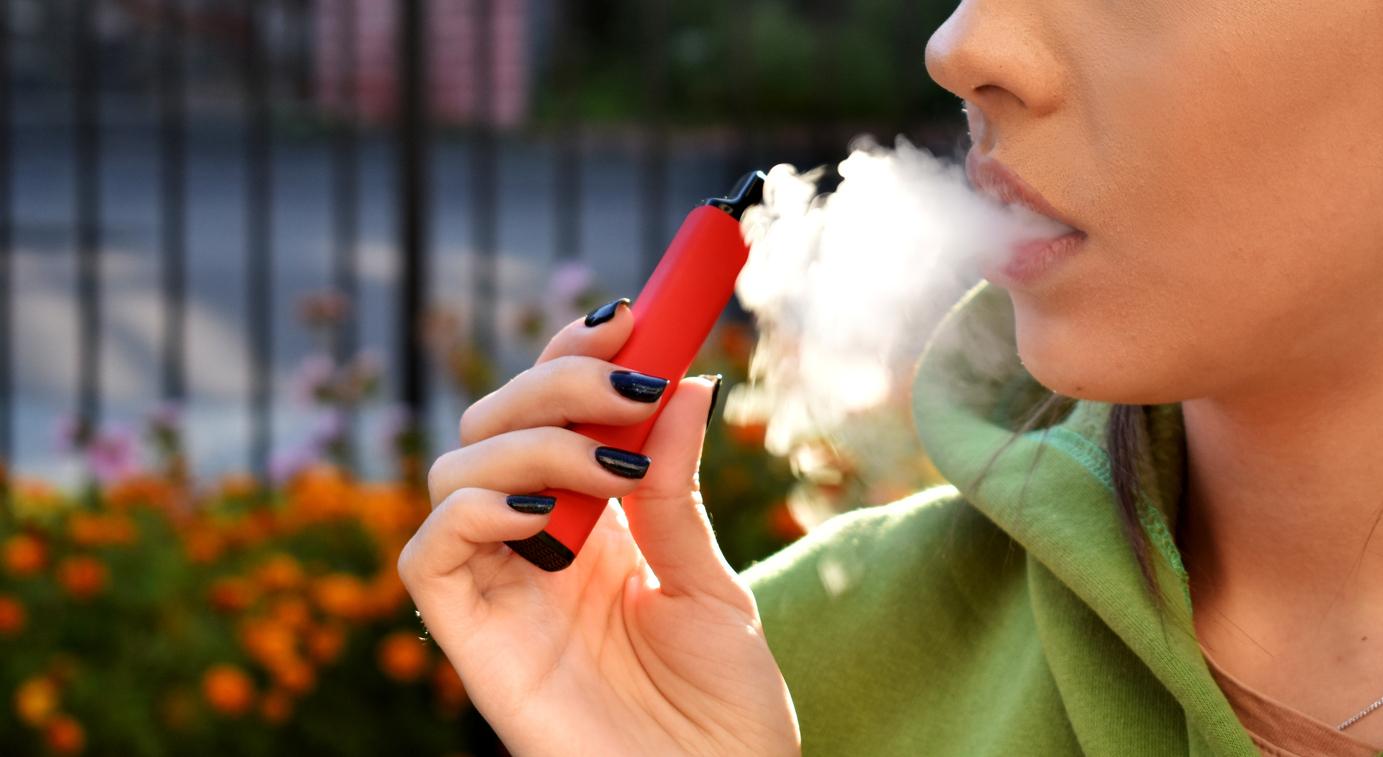Young people would be particularly attracted by the electronic cigarette because it allows them to mix tastes and aromas.

Worldwide, the electronic cigarette is extremely popular with teenagers. Concerned that young people who had never smoked traditional cigarettes before might develop a nicotine addiction because of vaping, researchers have tried to understand the factors influencing this trend. According to the study published on May 5 in the journal Public Health Nursingthis enthusiasm is mainly due to the possibility of mixing tastes and aromas.
Here, researchers followed 1,556 teenagers in South Korea. Among them, 55.1% said they had used e-cigarettes for 6-30 days in the past month and 44.9% had vaped for 1-5 days. Scientists have noticed that teenagers smoke e-cigarettes because they think they are less harmful than traditional ones. They are also easier to buy and appeal to them with their different flavors. Also, frequent users tend to have more spending money and be exposed to passive smoking at home. For the researchers, teenagers who continue to smoke electronic cigarettes regularly are therefore influenced by interpersonal and environmental factors.
“Due to the characteristics of e-cigarettes, such as ease of purchase and the addition of taste and flavor, the risk of continued use among adolescents is particularly high.explains the corresponding author Hyunmi Son, associate professor at the national university of Pusan (South Korea). Regulation of e-cigarettes may prevent continued use among adolescents”, he concludes.
Vaping all the more risky for young people whose brains are still developing
Since its appearance on the market, the electronic cigarette has continued to fuel controversy. Some studies say it increases chronic lung disease and has adverse effects on cardiovascular health, while others recommend it for smokers trying to quit. After many years of vagueness, the World Health Organization (WHO) finally issued a report on electronic cigarettes in January 2020, assuring that it was indeed dangerous for health.
According to the WHO, e-cigarettes increase the risk of heart disease and lung disorders. According to his findings, they are even more risky for adolescents because the brain completes its development around the age of 25. Worse still, passive vaping would expose those who undergo it to nicotine and other dangerous chemicals. As for the possible usefulness of the e-cigarette to gradually get out of the habit of traditional cigarettes and finally quit smoking, the Organization considers that there is not sufficient proof of the effectiveness of vaping in smoking cessation. Its researchers therefore recommend that smokers rather turn to substitute products such as patches or gum.
Different regulations in force to protect young people
In France, electronic cigarettes are officially prohibited for minors. The Hamon law published at Official newspaper in March 2014 makes it illegal to sell “tobacco products (…), electronic cigarettes or any other form of electromechanical or electronic inhaler simulating the act of smoking; liquids, whether or not containing nicotine, intended to be consumed with an electronic cigarette or with any other form of electromechanical or electronic inhaler simulating the act of smoking” under 18 years old.
In the United States, faced with the immense enthusiasm of young people for electronic cigarettes, new regulations have recently been introduced. For vapers of the Juul type, market leader, which use refills, cartridges or pods, fruit, mango or candy flavors, particularly popular with teenagers, have been banned from sale since February. Only the much less popular tobacco and menthol flavors can now be sold. However, all flavors remain authorized for electronic cigarettes which use refillable tanks allowing consumers to make their own mixtures of nicotine, cannabis and aromas. The official reason being that the users of this type of product are mostly adults and they are sold in specialized stores supposed to better control the age of their customers.

.
















